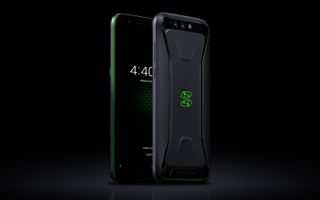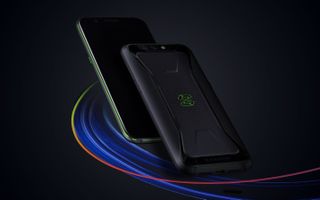Xiaomi's Black Shark Is the Gaming Phone We Really Want
Xiaomi's gaming phone is making its way to Europe, and it's got Razer and Asus firmly in its crosshairs.
Xiaomi has been making waves for its high-powered smartphones at cut-rate prices for years now. And now it appears that the company has turned its attention to gaming phones, setting its sights on conquering the Razer Phone 2 and Asus ROG Phone with its latest bargain.

Called the Black Shark, Xiaomi's first stab at a gaming-centric device has actually been available to Chinese customers for about half-a-year now. Technically, it's not officially a Xiaomi product, though the company does own a big stake of Black Shark Technologies — the firm responsible for designing the device.
In recent months, Xiaomi has made a greater effort of offering its wares outside of its native China, and so the Black Shark has just been announced for wider release across most of Europe, including the United Kingdom, per Phandroid. You can check the full list of 28 countries at the global website for the handset.
The first thing any gamer would care to know about the Black Shark centers around the hardware its packing. And to that end, the Black Shark is stacked to the brim with powerful silicon. Buyers get a Snapdragon 845 processor (with Adreno 630 graphics, of course); an option of 6GB or 8GB of RAM to accompany either 64GB or 128GB of storage; a 6-inch, 2160 x 1080 LCD display; and a beefy 4,000-mAh battery. All that powers stock Android, which Android purists will especially prefer to Xiaomi's own MIUI interface or Asus' ZenUI.
And what's a gaming phone without a serious cooling solution? Xiaomi touts the Black Shark's approach as "the world's first liquid-cooled gaming phone," though we suspect Samsung, Razer and Asus would have a few choice words about that claim.
Perhaps it all depends on the way in which companies define liquid cooling for the purposes of a handset. But in any case, the Black Shark's CPU reportedly runs 8 degrees Celsius cooler than equivalent gaming phones, while delivering 20 times the performance. Talk about sounding too good to be true.
MORE: Razer Phone 2 vs. ROG Phone: Which Gaming Phone Wins?
Sign up to get the BEST of Tom’s Guide direct to your inbox.
Upgrade your life with a daily dose of the biggest tech news, lifestyle hacks and our curated analysis. Be the first to know about cutting-edge gadgets and the hottest deals.
We hope to put those claims to the test, of course. But what has us particularly excited about the Black Shark is its price. In China, the 6GB/64GB configuration of the phone runs the equivalent of $480/£370. That's more than $300 less expensive than the Razer Phone 2, which itself is already a decent deal in this day and age. Plus, the Black Shark comes with a gamepad attachment that includes an analog stick out of the box.

The other aspect of the Black Shark we particularly like is the design. It's like the ROG Phone and Razer Phone had a baby, coupling Razer's signature green motif with the ROG Phone's more interesting stylistic touches. Overall, the Black Shark still looks more refined than Asus' gaming phone though, with its symmetrical design, striking mix of matte and glossy materials and a sleek bowtie shape on the backside. It very clearly follows the gamer aesthetic, but much more tastefully so.
Also, it's important to clarify that this device shouldn't be confused with Xiaomi's other gaming phone, the Black Shark Helo. That phone is still exclusive to China for the moment, though it looks to be even more exciting with an OLED panel in place of this phone's LCD one, and configurations offering up to a whopping 10GB of RAM with 256GB storage.
We can't wait to get our hands on the Black Shark, though U.S. customers should temper their expectations. It's possible the device makes it stateside after the European round of launches, though given that Xiaomi has yet to sell its other smartphones (like the stunning Mi Mix 2S) in this country, such an announcement is anything but certain.
Adam Ismail is a staff writer at Jalopnik and previously worked on Tom's Guide covering smartphones, car tech and gaming. His love for all things mobile began with the original Motorola Droid; since then he’s owned a variety of Android and iOS-powered handsets, refusing to stay loyal to one platform. His work has also appeared on Digital Trends and GTPlanet. When he’s not fiddling with the latest devices, he’s at an indie pop show, recording a podcast or playing Sega Dreamcast.
